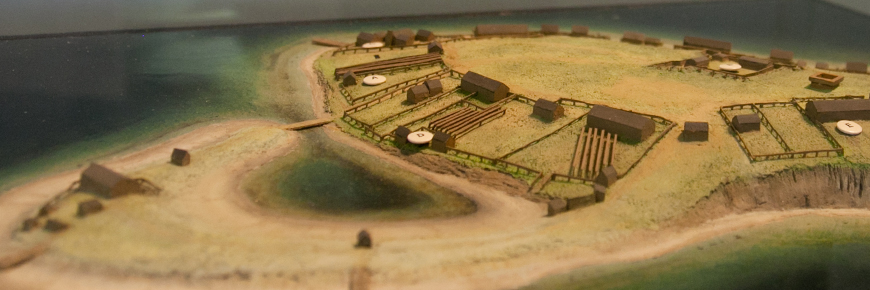
Cultural heritage
Canso Islands National Historic Site
European fishermen and entrepreneurs such as Nicholas Denys first came to the Canso Islands in the 1500s to fish and trade for furs. They built temporary shelters, wharves and fish flakes along the shores to salt and dry the abundant stocks of codfish. Archaeological evidence suggests that their Mi'kmaq trading partners had been coming to the islands for at least 1500 years before that.
In the 17th and 18th centuries, France and Britain struggled for control of North America. In 1713, the Treaty of Utrecht transferred ownership of mainland Nova Scotia to the British, while the islands in the Gulf of St. Lawrence remained French. Conflicting interpretations of the Treaty left the ownership of the Canso Islands in dispute. New England and French fishermen both coveted the area for its abundant cod stocks. Tempers flared and the French were finally evicted from Canso. In 1720, Nova Scotia governor Richard Philipps, fearing attacks from the French at the Fortress of Louisbourg in Cape Breton, established a small garrison on Grassy Island and later built a simple earthen fort.
Despite the French threat, Canso prospered. By 1730, thousands of New Englanders were flocking to the island each summer to fish. Humble shoreworkers, hardy fishermen, soldiers and merchants lived and worked side by side. The fishermen used schooners, which were larger and faster that the French chaloupes. At its peak, the Canso fishery pulled in more than eight million fish in a single season. The dried and salted fish were shipped to markets in Europe, America and the Caribbean, in exchange for a wide range of goods.
Not all of Canso's trade was legitimate. New Englanders were forbidden by English law to trade directly with the French colonies in North America. This led to extensive smuggling between Canso and Louisbourg. Nevertheless, except for a few wealthy merchants, living conditions remained austere. Luxuries were few, and the soldiers of the garrison subsisted without adequate food, shelter or clothing.
The Canso settlement met its end quite suddenly in the summer of 1744. Shortly after the declaration of war between England and France, an expedition from Louisbourg attacked Grassy Island and burned the outpost to the ground. The following year, an army of New Englanders used the island as a staging point for their attack on Louisbourg. After the capture of Louisbourg, the French threat faded and the New Englanders withdrew from Canso.
Today, the island remains a treeless, windswept memorial to the thriving fishery that contributed so much to the prosperity of 18th century New England.
- Date modified :